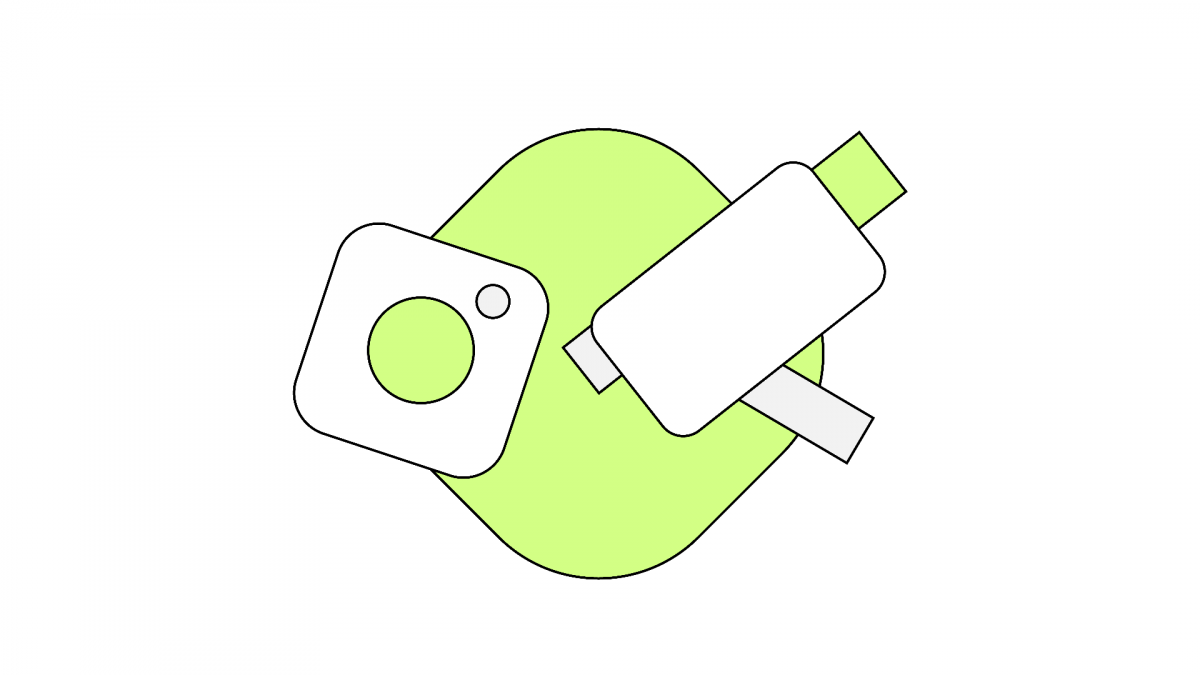Photo
How did your author the photo you recorded for upload to Instagram?
This is my first, weekly blog post where I will be looking into how I used Instagram to author, publish and distribute posts of examples of good and bad design. It was easy to find instances of bad design, especially with photography devices so I chose my camera’s battery charger as it requires three socket spaces on a four-space power board.
As this was my first time using the Instagram app to take images I was worried I would need to learn lots about new features, however, the camera was very simple to use with a point and shoot system.
Instagram has a complete emphasis on editing and promotes the idea that ‘taking a photograph is not the end of the process…’ (Leaver, Highfield & Abidin 2020, p. 46). Once I had taken my image I was shown an abundance of different filters and editing tools. I wanted to give my image an old film look and picked a monochrome filter which created a noir-like effect with dark shadows that were contrasted with bright whites. I felt that I had creative control over all the editing choices and achieved my desired outcome.
How did you publish the photo you recorded for upload to Instagram?
Many retakes of the image were necessary because the Instagram app wouldn’t focus, this was made more frustrating as I had to keep jumping between the camera and the preview image making the process more time-consuming. I started questioning if “one native app that [has a] limited number of controls… and one type of camera” (Manovich 2016, p. 12) simplifies the process or just puts a significant constraint on publishing. I believed it could have been easier to publish using my phone’s default camera which has a built-in Instagram feature.
I find when I use Instagram the first thing I look at is the image and then the caption for context. When making my caption I decided on “camera battery chargers are frustrating,” simple and straightforward with minimal text. Drawing from my background in design, I find there needs to be a balance between text and visual communication and when done correctly makes posts more engaging so I want to focus more on copywriting within my next few blogs to see how I can experiment further with captioning.
How did you distribute the photo you published on Instagram to other social media services?
I have never used hashtags before so this has been a new experience for me and I wasn’t sure how many were necessary so I used “#baddesign” and “#frustrating” which reflected the theme and caption of the image. I picked these hashtags because Instagram said they were popular within the community and I had the theory this could increase the chances of someone coming across the image. Hashtags will be something I need to work on improving as I don’t feel I did as well as I could have. I will research better ways to utilise hashtags and explore engaging keywords to gain a greater understanding and hopefully receive more interaction from community members.
Instagram made distributing straight forward as “you can share your photos to Facebook, Twitter, Tumbler, Mixi, Weibo, VK, and other platforms” (Manovich 2016, p. 17). All I had to do was link my Tumblr account for the image with its caption and hashtags to be automatically posted between both platforms. I also distributed my post to Flickr manually as I was unable to link my account to Instagram, meaning I had to go through the whole process again. This was frustrating because Flickr wanted me to edit the image repeatedly which I didn’t do and rather went to the caption page where I was able to re-add my hashtags. However, one of the hashtags had no posts associated with it, likely due to lower user usage as Flickr is aimed more at professional photographers.
References:
Manovich, L. 2016, ‘Introduction: ‘Instagram Platform as a Medium’, Instagram and the Contemporary Image, University of San Diego, USA. pp, 9-18.
Leaver, T., Highfield, T., Abidin, C., 2020. ‘Chapter 2. Aesthetics’, From the Instagram of Everything to the Everything of Instagram’, Instagram: Visual Social Media Cultures. Digital Media and Society, United Kingdom. pp. 38-63





Leave a Reply